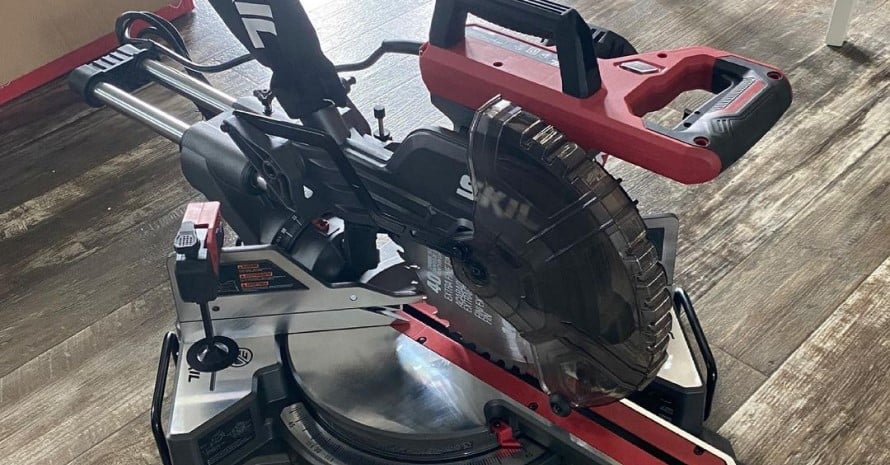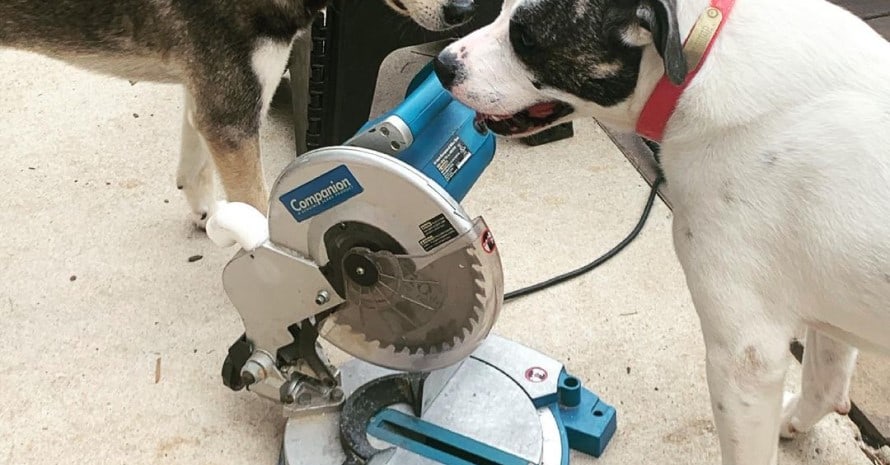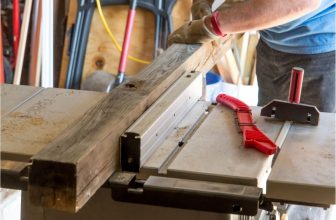10 vs 12 Miter Saw: How to Choose the Right Size
A miter saw is an indispensable tool for renovation and construction. My experience shows that not all DIYers can choose the right device for specific tasks. To do it, you need to keep in mind several important factors, the most essential of which is the miter saw blade diameter.
To make it easier for you to pick one, in this article, I will talk about the difference between a 10 vs 12 miter saw, the features of each instrument, and the nuances of their use. The speed, quality, and safety of your work depend on the correct choice.
Contents
Main Differences Between 10-inch and 12-inch Miter Saw
10 and 12 inches are the most commonly used blade diameters, although you can find 7.25-inch and 20-inch tools if needed. The choice of a specific size directly depends on how much work you have to do.
You should remember one key rule: if you do a small project, take a tool with a smaller diameter; when working with a large volume of material, take the larger size. There are the following reasons for it:
- Given that most modern models have the option of adjusting the cutting depth, a 12-inch saw gives you more flexibility in working with a variety of materials.
- Small tools are not suitable for cutting thick sheets of wood. If you work with hardwood, it is best to opt for a 12-inch instrument.
- Also, the smaller blade spins at a faster speed. It results in a smoother cut and less chance of chips, especially when working with delicate materials.
- The blade with a 10-inch diameter is smaller, which means the total weight of the saw will be less than that of a 12-inch device.
- Also, compact tools tend to be slightly cheaper than their larger counterparts.
10-inch Miter Saw
I find that 10-inch devices are more suitable for small tasks and home woodworking projects. I think all DIYers understand that the more compact the tool, the more limited its capabilities.
For example, the 10-inch miter saw maximum cut does not exceed 5.5 inches, which is inconvenient when working with thick boards or sheets of wood. Such instruments are far from the power needed for large-scale work.
Despite these drawbacks, the 10-inch miter saw is a compact, portable, and versatile tool that is easy to carry around. If you have other saws (e.g., a table or circular one) of the same diameter, you can buy one set of blades and switch between the devices, saving a lot of money.
In general, small instruments are cheaper and consume less electricity due to a small motor.
When comparing a 12-inch vs 10-inch miter saw, you should also consider that the blade of the smaller diameter rotates at a faster speed. Due to it, you get a perfectly flat and smooth cut, without chips. It allows you to work on delicate materials where cracks and scratches are particularly noticeable (e.g., laminate and plastic).
Also, compact devices are better suited for beginners because they are easier to handle. However, it does not mean that you shouldn’t follow safety rules when using them.
12-inch Miter Saw
Such devices are more likely to be classified as professional tools. They excel in virtually any material. The 12-inch miter saw max cut is about 7.5 inches. It means you can easily cut thick boards in a single pass. With a larger diameter blade, you get a more productive device. The powerful motor increases efficiency and allows you to handle even rigid materials like laminated lumber or plywood with ease.
Bigger tools are designed to be more stable, durable, and reliable. 12-inch saws use blades with an increased number of teeth for a smooth cut without the need for extra effort on your part.
Also, thanks to this motor, the blade is less bogged down in the material used and does not dull too quickly. It significantly increases the lifespan of your tool and saves you money.
At the same time, professional-grade devices belong to a higher price range. Besides, I have learned from my experience that finding a 12-inch blade might not be as easy as a 10-inch blade since they are somewhat less in demand among common buyers.
Also, before starting to work with a large tool, I highly recommend practicing on the pieces of wood or logs you won’t need further. Such devices are considered not beginner-friendly and might pose a certain danger to inexperienced users.
FAQ About Miter Saw Sizes
If you still have questions about choosing a device of a suitable size, you will find answers to some of them in this section.
Which is better, a 10-inch or 12-inch miter saw?
It is not to say that some instruments are worse or better. It all depends on your tasks. For home use and work with thin materials, the 10-inch device is more suitable. If you plan a large-scale project and need to cut thick sheets of wood, the 12-inch tool fits better.
How big of a board will a 10-inch miter saw cut?
If you need to make a straight cut, the 10-inch tool can cut a 2×6 inches piece of wood. The depth of a bevel cut is slightly less; you will be able to cut 2×4 materials with it. If your device is equipped with a sliding arm, the width can be much larger while the depth remains the same.
Can a 10-inch miter saw cut a 4×4?
Technically, it is possible. True, for it, you will have to make several runs. If you need to cut a large amount of material, it will take a long time to turn the boards over and re-cut them. Therefore, for such purposes, it is better to take a 12-inch device.
Also read:
- How to Unlock Miter Saw
- How to Change a Miter Saw Blade
- Sliding vs Non Sliding Miter Saw
- How to Cut Crown Molding With a Miter Saw
- How to Cut 45 Degree Angle With Miter Saw
- How to Cut Baseboards With a Miter Saw
- Single Bevel vs Double Bevel Miter Saw
- Miter Saw vs Compound vs Sliding Miter Saw
What size of miter saw is best?
The choice between a 10 or 12-inch miter saw depends on your experience with power tools and what you are looking for. If you are a beginner and plan to work with soft or thin materials, a smaller instrument is suitable for you. For professionals who work with thick wood, I recommend getting a larger and more powerful device.
Choose Saw Size Wisely
That’s all you need to know about choosing the right size saw. I hope I have explained everything clearly, and you’ll no longer have to ask yourself what size of miter saw do I need. Please tell me in the comments, do you agree with my opinion? Which tool do you use?
“A good tool stays with you for many years and choosing carefully ensures the job is done right, your work is neat, and the tool is always a pleasure to use”








